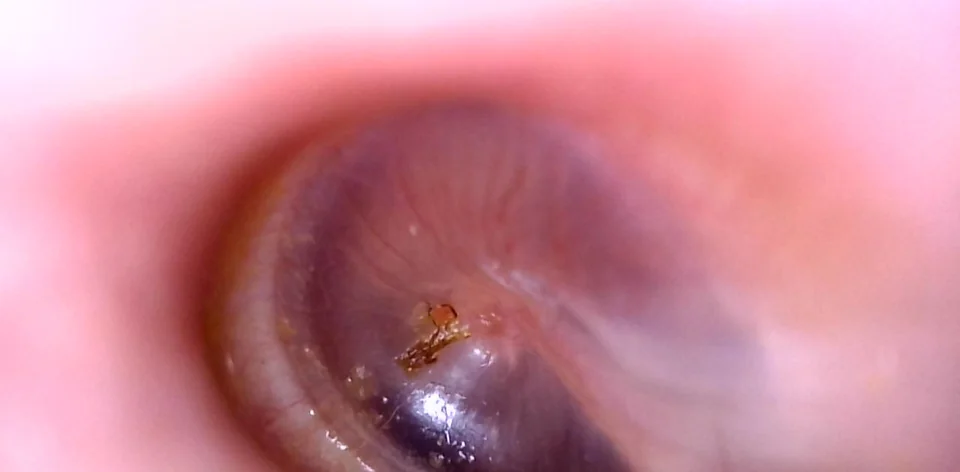
Sleep plays a crucial role in our overall health and well-being. However, for individuals with a ruptured eardrum, a good night’s rest can become a challenging task. A ruptured eardrum, also known as a tympanic membrane perforation, can be painful and disruptive, leading to concerns about the appropriate sleeping position that minimizes discomfort and supports healing.
In this article, we will explore the various factors to consider when choosing the optimal side to sleep on with a ruptured eardrum. We will delve into the anatomy of the ear, the healing process, and the potential risks associated with sleeping positions. Furthermore, we will provide recommendations and tips to ensure a restful and comfortable sleep while promoting the healing of a ruptured eardrum.
Understanding the Anatomy of the Ear
Before delving into the best sleeping positions, it is essential to grasp the basic anatomy of the ear and how a rupture can occur. The ear consists of three main sections: the outer ear, the middle ear, and the inner ear. The middle ear houses the eardrum, a thin, delicate membrane that separates the ear canal from the middle ear space.
A ruptured eardrum can be caused by various factors, including infection, trauma, loud noises, or changes in air pressure. Once the eardrum is damaged, it can lead to pain, hearing loss, and increased sensitivity to external factors, such as changes in temperature and pressure.
Choosing the Optimal Sleeping Position
- Elevating the Head: When you have a ruptured eardrum, elevating your head slightly while sleeping can help alleviate discomfort. Prop your head up with an extra pillow or two to allow any fluid buildup to drain away from the affected ear. This elevation can also help reduce pressure and ease pain, allowing you to have a more peaceful sleep.
- Sleeping on the Opposite Side: If you have a ruptured eardrum in one ear, it is generally recommended to sleep on the opposite side, keeping the affected ear facing upwards. By doing so, you can minimize the risk of any potential irritation or exacerbation of the condition. However, if both ears are affected, sleeping on your back or elevating your head might be the most suitable option.
- Avoiding Sleeping on the Stomach: Sleeping on your stomach can place unnecessary pressure on the affected ear, leading to increased pain and discomfort. Additionally, it may interfere with the drainage of fluid from the ear, potentially prolonging the healing process. As such, it is best to avoid sleeping on your stomach if you have a ruptured eardrum.
The Healing Process and Timeframe
The healing process of a ruptured eardrum can vary depending on the severity of the perforation. In most cases, minor ruptures heal on their own within a few weeks. Larger perforations may take longer to heal, and in some cases, surgical intervention may be necessary to facilitate healing.
During the healing process, it is essential to take certain precautions to avoid complications and promote a faster recovery. One of these precautions is ensuring a proper sleeping position that minimizes pressure on the affected ear and encourages drainage.
Risks of Improper Sleeping Positions
Sleeping on the side of the affected ear or in an improper position can pose certain risks:
- Prolonged Healing Time: Placing pressure on the ruptured eardrum can impede the natural healing process, leading to an extended recovery time.
- Increased Discomfort: Improper sleeping positions can exacerbate pain and discomfort, disrupting sleep and overall well-being.
- Infection Risk: Poor drainage and trapped moisture can create an environment conducive to bacterial growth, increasing the risk of ear infections.
- Hearing Complications: In rare cases, improper sleeping positions may lead to persistent hearing problems, especially if the eardrum fails to heal correctly.
Tips for Comfortable Sleep with a Ruptured Eardrum
- Use Extra Pillows: Elevate your head with extra pillows to reduce pressure on the affected ear and promote fluid drainage.
- Apply Warm Compresses: Placing a warm, moist compress on the affected ear for 15-20 minutes before bedtime can help soothe pain and discomfort.
- Avoid Ear Contact: Be cautious while sleeping and avoid putting any pressure on or inserting objects into the affected ear.
- Seek Medical Advice: If you experience severe pain, worsening symptoms, or signs of infection, consult an ear, nose, and throat (ENT) specialist for proper evaluation and treatment.
Conclusion
A ruptured eardrum can be a painful and inconvenient condition, affecting one’s ability to sleep comfortably. Choosing the right sleeping position and following proper precautions are essential for minimizing discomfort and promoting the healing process. Remember to elevate your head, sleep on the opposite side of the affected ear, and avoid stomach-sleeping to ensure a more restful and comfortable night’s sleep.
It is important to note that the information provided in this article is for general guidance only and should not replace professional medical advice. If you have a ruptured eardrum or suspect an ear injury, consult a healthcare professional or an ENT specialist for proper evaluation and personalized recommendations to aid in your recovery.





